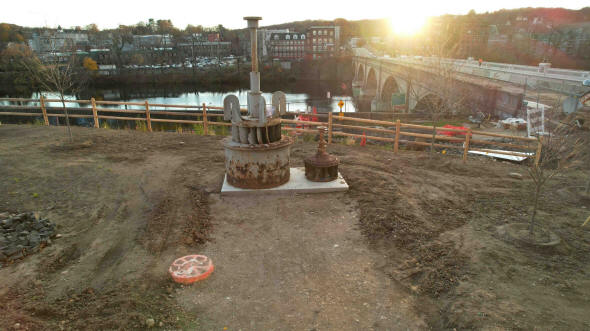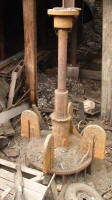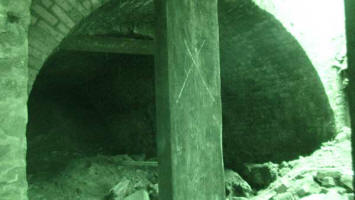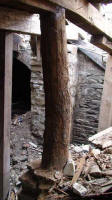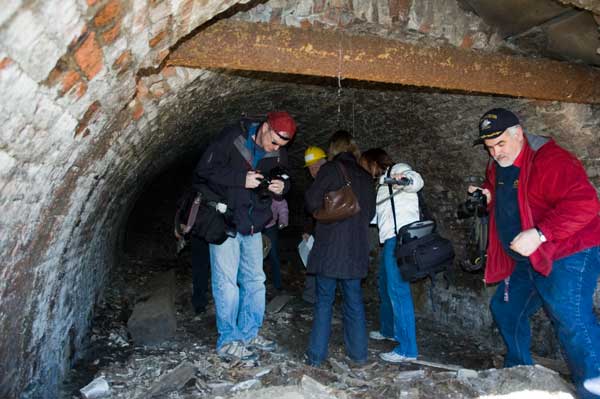Demolition Unearths Derby's Past
Mayor Staffieri, Dave Carver and Andy Bowolick stand in front of the historic "tub wheel" discovered in the building being demolished in the downtown area. Pictures from inside the mill showing the wheel, tunnel and tree trunk supporting the building's beams. (Click images for larger views) In the years prior to the Civil War the City of Derby underwent a remarkable transition to a thriving business center by transforming the area west of the Naugatuck River into a center for manufacturing. A center piece of that change was the construction of "The Big Copper Mill" between First and Second Street in what was to become the Borough of Birmingham. The copper mill was constructed in 1836 by Anson Phelps. Phelps had been convinced to undertake the enterprise by the visionary businessman Sheldon Smith who had been responsible for constructing the Birmingham Reservoir in 1834 which diverted water from the Naugatuck River used to provide water to the new industries in the area that was first called "Smithville" but later Birmingham. A system of pipes brought the water to the mills where it pushed the water wheels that provided power to the new copper and woolen mills. The copper mill was burned and reconstructed in 1838. In 1865, the buildings became known as the Paugassett Mills and employed as many as 250 people. The property entered into decline decades ago and its last use was mainly as warehouse space. It had fallen into severe disrepair, and when part of the roof caved in earlier this year (2009), the building was ordered to be demolished. Rob Novak, Executive Director of the Derby Historical Society, and David Carver a volunteer with the Society were aware of the extensive system of pipes that fed the downtown area and the fact that the building being demolished contained two rare "tub wheels" which had supplied the power. Tub wheels are water wheels that lie on their side rather than in the traditional upright position normally associated with water-powered wheels.
Reporters and photographers examined the aqueduct that brought water from the reservoir to the downtown mills. They contacted Andy Bowolick of C & L Demolition which was in charge of the demolition to see if they might gain access to the building to see if the wheels were indeed there and worth preserving. An 1848 map of Birmingham, which can be found at www.Derbyhistorical.org, clearly showed the piping system running into the building, and when they entered the basement, they found the pipes and wheels right where they were shown on the map! Carver had done further research and had located the original plans for tub wheels similar to the ones found in Derby. The Historical Society is pursuing the possibility of having the wheels donated to the Historical Society for posterity. Posted 3/30/2009 Updated September 20, 2023 |
